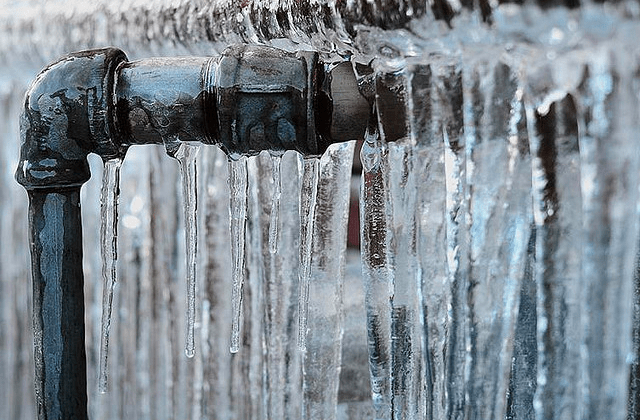Avoiding Frozen Plumbing in Winter: Professional Advice
Avoiding Frozen Plumbing in Winter: Professional Advice
Blog Article
We have stumbled on this great article relating to 6 Ways to Prevent Frozen Pipes listed below on the net and reckoned it made perfect sense to relate it with you on this site.

Winter can damage your pipes, particularly by freezing pipes. Here's exactly how to prevent it from occurring and what to do if it does.
Intro
As temperature levels decline, the threat of icy pipelines increases, possibly bring about expensive repairs and water damages. Understanding how to stop frozen pipes is important for property owners in cold environments.
Understanding Icy Pipes
What creates pipes to ice up?
Pipes freeze when revealed to temperatures listed below 32 ° F (0 ° C) for extended durations. As water inside the pipelines freezes, it broadens, taxing the pipe walls and possibly creating them to burst.
Dangers and problems
Icy pipes can cause water interruptions, building damages, and pricey repair work. Ruptured pipes can flood homes and trigger considerable structural damage.
Indications of Frozen Water Lines
Recognizing frozen pipelines early can stop them from rupturing.
Exactly how to determine frozen pipelines
Seek decreased water circulation from taps, unusual odors or sounds from pipelines, and visible frost on exposed pipes.
Avoidance Tips
Insulating at risk pipes
Cover pipes in insulation sleeves or utilize heat tape to protect them from freezing temperatures. Focus on pipelines in unheated or exterior locations of the home.
Home heating methods
Maintain indoor spaces sufficiently heated, specifically areas with plumbing. Open up cupboard doors to permit cozy air to distribute around pipelines under sinks.
Safeguarding Outside Pipes
Yard tubes and outside faucets
Disconnect and drain pipes yard hose pipes before winter. Mount frost-proof faucets or cover outdoor taps with protected caps.
What to Do If Your Pipes Freeze
Immediate activities to take
If you think icy pipelines, keep taps available to alleviate stress as the ice melts. Make use of a hairdryer or towels soaked in warm water to thaw pipes gradually.
Long-Term Solutions
Structural modifications
Take into consideration rerouting pipes far from outside walls or unheated locations. Include extra insulation to attic rooms, cellars, and crawl spaces.
Upgrading insulation
Purchase top notch insulation for pipelines, attic rooms, and walls. Appropriate insulation assists keep consistent temperature levels and minimizes the threat of frozen pipes.
Verdict
Protecting against icy pipes requires proactive steps and quick actions. By recognizing the causes, indications, and preventive measures, house owners can secure their plumbing during cold weather.
6 Proven Ways to Prevent Frozen Pipes and Protect Your Home
Disconnect and Drain Garden Hoses
Before winter arrives, start by disconnecting your garden hoses and draining any remaining water. Close the shut-off valves that supply outdoor hose bibs and leave the outdoor faucet open to allow any residual water to drain. For extra protection, consider using faucet covers throughout the colder months. It’s also important to drain water from any sprinkler supply lines following the manufacturer’s directions.
Insulate Exposed Pipes
Insulating your pipes is an effective way to prevent freezing. Pipe insulation is readily available at home improvement stores and is relatively inexpensive. Pay close attention to pipes in unheated areas such as the attic, basement, crawl spaces, or garage. Apply foam insulation generously to create a buffer against the cold. You can also wrap your pipes in heat tape or thermostat-controlled heat cables for added warmth.
Seal Air Leaks
Inspect your home for any cracks or openings that could let in cold air. Seal any holes around the piping in interior or exterior walls, as well as the sill plates where your home rests on its foundation. Additionally, make sure to keep your garage door closed unless you’re entering or exiting. Leaving it open creates a significant air leak that can lead to frozen pipes.
Allow Warm Air Circulation
During cold snaps, it’s essential to allow warm air to circulate evenly throughout your home. Leave interior doors ajar to promote better airflow. Open kitchen and bathroom cabinets to help distribute heat consistently around the rooms. If you have small children or pets, be sure to remove any household chemicals or potentially harmful cleaners from open cabinets for safety.
Let Faucets Drip
A small trickle of water can make a big difference in preventing ice formation inside your pipes. When temperatures drop significantly, start a drip of water from all faucets served by exposed pipes. This continuous flow helps prevent the water from freezing. Additionally, running a few faucets slightly can relieve pressure inside the pipes, reducing the chances of a rupture if the water inside does freeze.
https://choateshvac.com/6-proven-ways-to-prevent-frozen-pipes-and-protect-your-home/

We were brought to that report about 6 Ways to Prevent Frozen Pipes through a friend on our other domain. Are you aware of another person who is fascinated about the subject? Why not share it. Thank you for your time spent reading it.
Further Details Report this page